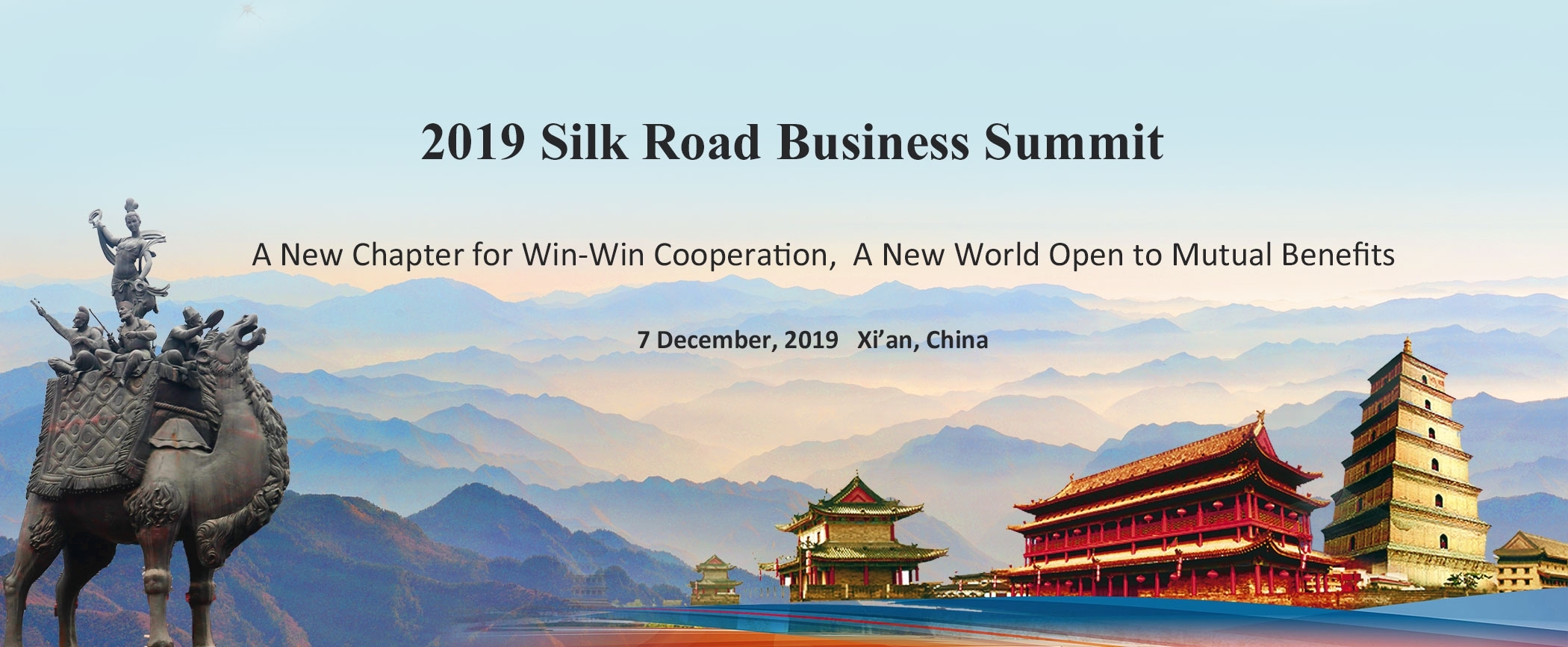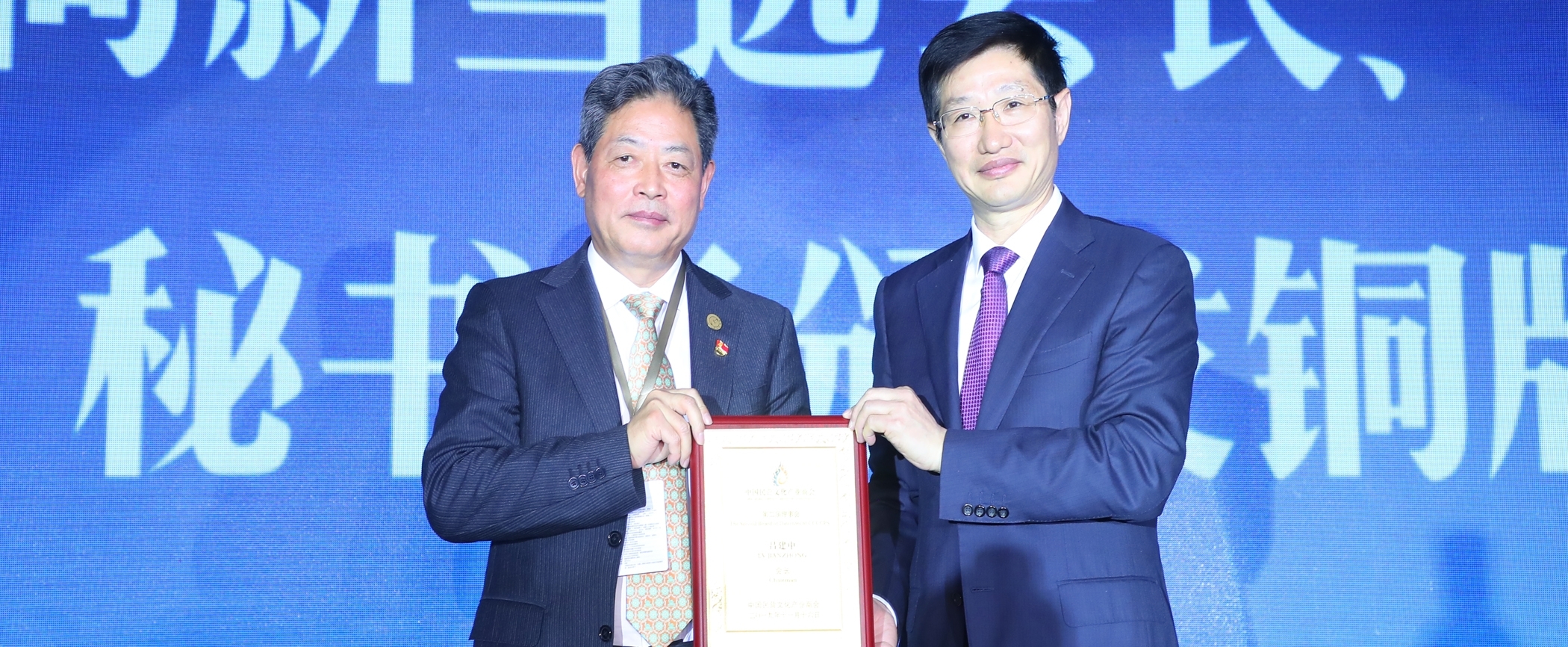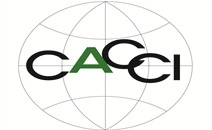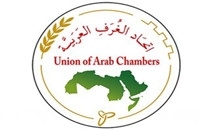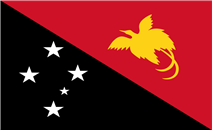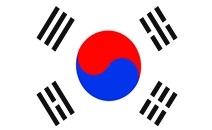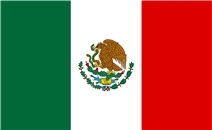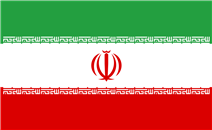Japan encouraged to seize BRI opportunities

Japan encouraged to seize BRI opportunities
16 Apr 2024
People from all walks of life in Japan can objectively view the Belt and Road Initiative and seize more cooperation opportunities, as joint BRI construction provides a pathway for building a community with a shared future for mankind, says Chinese Ambassador to Japan Wu Jianghao.
Any country committed to shared development can take part in the BRI as an equal partner and gain from it, regardless of their political system, history, culture or stage of development, Wu said.
Since the launch of the BRI in 2013, the joint construction of the initiative has entered a stage of high-quality development.
Over the past 11 years, the BRI has achieved fruitful results, becoming the widest-ranging and largest-scale international cooperation platform in the world, Wu told a forum organized by the Japan-China Belt and Road Initiative Promotion Association in Tokyo last week.
"The joint construction of the BRI practices true multilateralism, does not exclude or target any party, does not engage in geopolitical games, does not form closed and exclusive 'small circles', does not impose values and development models, and certainly does not form military alliances."
Therefore, the joint construction of the BRI can maximize consensus, overcome obstacles and become increasingly accepted by the international community, he added.
Developing countries have embraced the initiative as it aims to resolve their significant challenges, including infrastructure, funding, technology and expertise, Wu said.
Some Western countries have been accusing China of creating "debt traps" in developing countries, which is pure misinformation, he said.
Data from the World Bank showed Western commercial and multilateral institutions hold two-thirds of the debt obligations of low- and middle-income countries in the next seven years, while China only accounts for 14 percent of such debts.
Wu called on Japan to listen to the voices of its companies, as many are involved in Belt and Road cooperation and have benefited from it.
Many Japanese companies are using China-Europe freight trains and river-sea transportation to expand business opportunities. Collaborations between Chinese and Japanese companies and financial institutions in third-party markets have yielded positive results, spanning sectors such as infrastructure, eco-financing, logistics and clean energy.
"The facts prove that the BRI is an opportunity for Japan, not a threat," Wu said.
China is willing to work with all countries to achieve high-quality development of the BRI on a larger scope, in broader fields and at a deeper level, he said. As a close neighbor and key partner of China, Japan is welcome to take part in the joint construction of the BRI.
Attendees to the forum included the Japan-China Belt and Road Initiative Promotion Association's President Kazuyuki Hamada, and its representative Yoshikazu Ono. They said the association will vigorously promote a better understanding of the BRI among various sectors of Japanese society and actively take part in the joint construction of the initiative.
Source:China Daily Global
Forum set to deepen BRI ties and promote infrastructure

Forum set to deepen BRI ties and promote infrastructure
16 Apr 2024
The Digital Silk Road Development Forum of the World Internet Conference aims to build a platform for exchanges and cooperation among countries and regions involved in the Belt and Road Initiative, promote the construction of network infrastructure, reduce the digital divide and create a better digital future, according to a senior WIC official.
"It is the first time that the WIC is holding a thematic forum centered on the Digital Silk Road, which combines the development of the digital economy with the Belt and Road Initiative," said Ren Xianliang, secretary-general of the World Internet Conference.
By advancing the construction of the Digital Silk Road, Ren said China has deepened exchanges and cooperation with BRI economies in fields including digital infrastructure, digital technologies and digital market, promoted the digital transformation of related countries and regions, effectively narrowed the digital divide, and shared digital achievements.
Themed "Connectivity and Shared Prosperity", the WIC Digital Silk Road Development Forum on Tuesday in Xi'an, Shaanxi province, will focus on three topics — "Digital Connectivity and Cooperation in Building the Silk Road", "Silk Road E-commerce International Cooperation" and "Digital Villages and Sustainable Development".
Organizations and enterprises from nearly 50 countries and regions, including the Global System for Mobile Communications Association (GSMA), the Shanghai Cooperation Organization, Intel, SAP, Nokia, Micron, ZTE and Alibaba have confirmed their participation in the forum.
The WIC held a member representative symposium on Monday. Cross-border e-commerce training classes and seminars on assessing the competitiveness of cross-border e-commerce will be launched to cultivate the relevant talent for BRI economies and provide practical experience for the innovative development of the cross-bolster e-commerce industry, Ren said.
China has made significant progress in the construction of the Digital Silk Road.
By end-2022, China had signed memorandums of understanding on building the Digital Silk Road with 17 countries, and on e-commerce cooperation with 30 countries, according to a white paper released by China's State Council Information Office.
Noting that the Silk Road e-commerce connects BRI economies and promotes economic development, Ren said the Digital Silk Road cross-border e-commerce workshop, which will officially kick off on Wednesday, is conducive to deepening exchanges and cooperation among China and other BRI economies, and building an exchange and mutual learning platform about the cross-border e-commerce industry.
Professionals and experts from the International Trade Center, the E-Commerce Business Alliance Expert Committee of the Asia-Pacific Economic Cooperation, comprehensive pilot zones for cross-border e-commerce, universities and cross-border e-commerce enterprises will be invited to discuss the new opportunities, challenges and the best practical experience in the fast-developing sector during the workshop, Ren said.
He added that the forum is also expected to bolster the facilitation of cross-border e-commerce, promote data flows and sharing, as well as allow more countries and regions to share new development opportunities brought about by digital technologies.
China's cross-border e-commerce sector has become an important driving force for bolstering development of the nation's foreign trade, experts said.
Data from the General Administration of Customs showed that, based on preliminary calculations, the import and export scale of the country's cross-border e-commerce transactions reached 577.6 billion yuan ($79.8 billion) in the first quarter of this year, up 9.6 percent year-on-year.
Source: China Daily
Jointly fostering digital connectivity in building the Silk Road

Jointly fostering digital connectivity in building the Silk Road
15 Apr 2024
Themed on "Connectivity and Shared Prosperity", the World Internet Conference (WIC) Digital Silk Road Development Forum will be held on April 16 in Xi'an, Northwest China's Shaanxi province.
For thousands of years, the Silk Road has forged new path facilitating exchanges among different countries, something it continues to do for countries along the Silk Road, achieving higher-quality development and common prosperity.
The host city of the WIC Digital Silk Road Development Forum, Xi'an, has made significant strides in deepening the Belt and Road cooperation. In 2023, Shaanxi projected that the province's digital economy expected to reach a scale of 1.4 trillion yuan, while Xi'an, the starting point of the ancient Silk Road, saw the added value of its core digital economic industries accounting for over 9 percent of its GDP the same year.
Through this forum, the WIC will continue to build a global platform for communication and cooperation, deepening exchanges and collaboration among countries and regions involved in the BRI in digital technology, digital infrastructure, and digital markets, so as to bridge the digital divide and jointly build a community with a shared future in cyberspace.
Source:wicinternet.org
Gateway to the future

Gateway to the future
12 Apr 2024
Revitalized Belt and Road Initiative is helping to propel Malaysia's transformation into a high-tech nation
The Belt and Road Initiative has catalyzed socioeconomic development in Malaysia and the broader region. As the BRI embarks on its second decade, expectations are high that it will continue to facilitate the transition of the developing world toward more sustainable growth and enable it to embrace the opportunities presented by the Fourth Industrial Revolution.
In 1974, Chairman Mao Zedong and then Malaysian prime minister Tun Abdul Razak convened in Beijing to establish diplomatic relations between China and Malaysia. This year commemorates the 50th anniversary of that historic event. Half a century later, the bond between the two countries has never been stronger.
In 2023, Malaysian Prime Minister Anwar Ibrahim made two visits to China, emphasizing the significant importance he places on fostering a strong relationship between the two countries. Among various agreements, Prime Minister Anwar and Chinese President Xi Jinping committed to cultivating trust between the world's diverse cultures through the Global Civilization Initiative.
Economic cooperation has always been the cornerstone of the China-Malaysia relationship. Over the past decade, the BRI has emerged as a pivotal catalyst, further driving and shaping this robust economic collaboration between the two nations. In 2022, China-Malaysia trade reached $203.59 billion, up 15.3 percent year-on-year. China has been the largest trading partner of Malaysia for 15 consecutive years since 2009, accounting for 17.1 percent of Malaysia's total external trade in 2023.
The BRI carries unique historic significance for the China-Malaysia relationship. The maritime route retraces the 15th century voyages of Admiral Zheng He, who made notable stopovers in the Sultanate of Melaka. These visits during the Ming Dynasty (1368-1644) laid the foundation for the initial diplomatic and civilization ties between ancient China and the Malay world. Naturally, the BRI today serves as a rekindling of an old friendship established some 600 years ago.
Over the past decade, China has invested in a diverse array of projects in Malaysia through the BRI, including the East Coast Railway Link, the Malaysia-China Kuantan Industrial Park, the Trans-Sabah Gas Pipeline and various others.
These initiatives have generated significant development and transformed Malaysia's social and economic landscape. However, the COVID-19 pandemic caused disruptions to the progress of the BRI in Malaysia, as it did elsewhere.
Great power rivalry and geopolitical tension have also posed challenges, with trade tariffs and sanctions disrupting supply chains and undermining economic growth. Malaysia, along with the Association of Southeast Asian Nations in general, remains committed to a policy of open and free trade, actively engaging with China and all other relevant stakeholders dedicated to fostering the common good.
In fact, since its inception, the BRI has evolved beyond the conventional infrastructure focus, expanding into diverse sub-initiatives such as the Health Silk Road, the Green Silk Road, and the Digital Silk Road.
The Health Silk Road, for instance, has become part of the BRI framework in Malaysia. During the COVID-19 pandemic, China's assistance in supplying vaccines not only aided Malaysia in managing the crisis, but also facilitated the development of China's own vaccine capabilities. Subsequently, China has committed to supporting Malaysia's vaccine research and production, reflecting a collaborative effort aligned with the Health Silk Road's goal of enhancing global public health.
In recent years, China has emerged as a trailblazer in renewable energy and green manufacturing. Through the framework of the Green Silk Road, it strategically positions itself at the vanguard of the global green technological revolution, benefiting developing countries such as Malaysia. Beyond solar panels and electric vehicles, Chinese-manufactured hydrogen buses are playing a pivotal role in Malaysia's ongoing transition to renewable energy.
China's remarkable transformation into a technological powerhouse has given rise to another new subdivision, namely, the Digital Silk Road. This initiative is expected to assist Malaysia and other nations in embracing the digital age. For example, Huawei is anticipated to launch Malaysia's second 5G network, contributing significantly to the country's technological progress. Moreover, Alibaba has selected Malaysia as its regional e-commerce hub and has entered into an agreement to transform Kuala Lumpur into the first "smart city" outside of China using Alibaba technology.
In 2023, while visiting the China-ASEAN Expo in Nanning, the Guangxi Zhuang autonomous region, Prime Minister Anwar secured China's renewed commitment to support Putrajaya's New Industrial Master Plan 2030. This plan is expected to harness the Digital Silk Road to propel Malaysia into a high-tech nation.
As the China-Malaysia relationship celebrates its 50th anniversary, the two countries are expected to enter into a new era of closer people-to-people bonds and enhanced economic cooperation, driven by a revitalized BRI.
Indeed, as it embarks on its second decade, the BRI has evolved into "a road of science and technology" that places innovation high on the agenda, ready to expedite the transition of the developing world, including Malaysia, into the digital age and a future defined by technological possibilities.
The author is a research associate at the Institute of China Studies at the University of Malaya. The author contributed this article to China Watch, a think tank powered by China Daily.
Source: China Daily
Shanghai unveils priorities to advance Belt and Road Initiative in 2024

Shanghai unveils priorities to advance Belt and Road Initiative in 2024
11 Apr 2024
To promote the high-quality development of the Belt and Road Initiative in 2024, Shanghai will focus its efforts on the following nine aspects:
1. Deepen regional coordination and collaboration to synergize the integrated development of the Yangtze River Delta with the high-quality development of the BRI
(a)Expedite the establishment of the Belt and Road High-quality Development Promotion Association of the Yangtze River Delta.Support the global expansion of the YRD region'sadvantageous industries, quality equipment, applicable technologies, and standards, thereby enhancing the collaborative openness in the region to boost the high-quality development of the BRI.
(b) Continuously strengthenBRI information sharing and resource aggregation. Consolidate and enhance the functions of the Shanghai Belt and Road Comprehensive Service Center.
Continuously enrich the functions of the WeChat mini-program dedicated to providing information and services related to the BRI, known as Silk Road e-Together (丝路e启行).
2. Consolidate the foundation of cooperation and actively contribute to building the Belt and Road Connectivity Network
(a) Enhance the service capabilities of Shanghai Port andexpedite the collaborative efforts with the YRD to establish a global shipping hub.
(b) Actively engage in the formulation of international maritime technical rules and standards, leading thetransformation of shipping towards green, digital, and smart directions.
(c) Strengthen collaboration among Shanghai airports and other airports in the YRD in terms of functional positioning, planning and construction, operational management, ground transportation, and other aspects. This will continuallyenhance the coverage and accessibility of Air Silk Road routes.
(d) Strive to increase the routes and frequencies of Shanghai-Europe freight trains.
3. Actively integrate into the global economy and cultivate collaborative flagship brands
(a)Organize the seventh China International Import Expo effectivelyand encourage the participation of high-quality products and services from countries involved in the BRI.
(b)Accelerate the development of Silk Road E-commerce cooperation pilot zones, facilitatingcultural exchanges, trade, and product exhibitions and sale. Utilize Shanghai's technological and engineering contracting advantages to support the construction of landmark projects and "small yet smart" initiatives.
(c)Foster the high-quality development of industrial Internet of Things service platforms, providing new impetus for economic cooperation within the BRI framework.
Facilitate trade and investment promotion agencies in hosting exhibitions in BRI countries, vigorously attracting enterprises from those countries to invest in Shanghai.
4. Continuously deepen pragmatic cooperation in the financial sector, offering stable, transparent, and high-quality financial backing for the BRI
(a) Continuouslyrefine the renminbi clearing and settlement networkto elevate the standard and quality of cross-border renminbi services for the BRI.
(b) Support financial institutions in Pudong New Area to explore opportunities forproviding cross-border investment and financing, as well as other financial services, in line with international standards and practices. This aligns with Pudong's efforts to establish itself as a leading area, a pilot free trade zone, and to develop its Lin-gang Special Area.
(c)Deepen the bilateral opening-up and connectivity of financial markets, fostering an improved environment for equity and debt financing for enterprises involved in the BRI. Actively address overseas investors' demand for renminbi-denominated assets and their risk management requirements.
5. Jointly promote green development and expand cooperation in new sectors
(a) Encourage enterprises to participate in the joint development of national projects in sectors likegreen infrastructure, green energy, and green transportationin BRI countries.
(b)Support the establishment of the Green Technology Bank in Phnom Penhin collaboration with the Cambodian government to facilitate international cooperation in green technology innovation.
(c) Host theShanghai International Carbon Neutrality Expowith high quality, providing more green solutions for green and low-carbon development in BRI countries.
(d) Strive to introduce a series of globally influential Green Silk Road demonstration projects in green industries based onenvironmental, social, and governance (ESG)principles.
(e)Explore innovative breakthroughs in green financial products related to the BRI, guiding sustainable development of overseas projects through policy-oriented financing.
6. Strengthen cooperation in scientific and technological innovation
(a) Establish joint laboratories with BRI countries tofacilitate collaborative research, as well as commercialization and application of research outcomes.
(b) Promote key platforms such as the Yangtze River Delta National Technology Innovation Center, the Shanghai Technology Exchange, and the China-Israel (Shanghai) Innovation Park to broaden the scope of cooperation and engage with more regions.
(c)Facilitate Shanghai enterprises in their global expansion efforts by fostering industrial investment cooperation with BRI countries, especially in critical sectors such as information services and new energy design systems.
7. Enhance people-to-people exchanges
(a) Cultivate dialogue between civilizations with BRI countries
Further develop the Network of Silk Road Arts Festivals.
Promote the Network for Joint Promotion of Culture and Tourism in Sister Cities in the BRI Context.
Showcase Shanghai-style cultural and tourism projects, such as the eight-episode documentaryChina Before China, andA Dialogue with the World, a series of arts and cultural relics exhibitions held by the Shanghai Museum.
Explore diverse mechanisms for organizing film tours featuring movies from BRI countries.
(b) Strengthen education cooperation with BRI countries
Carry out advanced training programs.
Encourage the internationalization of professional standards and curriculum standards for vocational education.
(c) Enhance healthcare cooperation with BRI countries
Build a high-level overseas traditional Chinese medicine center.
Establish a base for the commercialization and international promotion of TCM achievements.
Promote the development of TCM services trade.
(d) Foster sports cooperation with BRI countries
Utilize international events, conferences, and activities held in Shanghai to actively engage in exchanges and cooperation in sports, research, and industry.
Actively invite teams from BRI countries to participate in Shanghai's signature events such as the Shanghai International Marathon and the Head of Shanghai River Regatta.
8. Improve mechanisms for international cooperation regarding BRI
(a) Actively explore the potential of sister city cooperation and enhance the integration and design of projects promoting friendly exchanges.
(b) Support think tanks in Shanghai to deepen collaboration with their counterparts from BRI countries through project cooperation, facilitating mutual learning and the sharing of development concepts and governance experiences.
9. Strengthen compliance management and foster a clean Silk Road
Guide enterprises expanding globally to establish compliance management systems, enhance their self-discipline, legal awareness, and sense of responsibility, and standardize their overseas business operations.
Source: Shanghai Municipal Development and Reform Commission
Interview: China-Europe Railway Express vitalizes regions along its route, says German expert

Interview: China-Europe Railway Express vitalizes regions along its route, says German expert
10 Apr 2024
DUISBURG, Germany, April 8 (Xinhua) -- The China-Europe Railway Express has injected vitality into Duisburg, a key transportation hub in the Ruhr region of Germany, and has opened up new development opportunities for the countries and cities along its route, a German professor has said.
Bernd Noche, a professor at the University of Duisburg-Essen in Germany and head of the Department Transport Systems and Logistics, told Xinhua in a recent interview that Duisburg is emerging as a pivotal hub for connectivity and trade between China and Europe, thanks to the China-Europe Railway Express project, which connects 120 Chinese cities with 219 cities across 25 European countries.
According to data from Duisport, the ownership and management company of the Port of Duisburg, connections between Chinese cities and Duisburg now take between 12 and 18 days for transportation.
Approximately 60 trains arriving on the China-Europe Railway Express reach Duisburg each week, with the goods on the trains subsequently transported to domestic seaports or neighboring countries in Europe.
The China-Europe Railway Express introduces a more balanced mode of transportation, the German professor said. "When we consider railway connections, this is now a unique mode of transport because it is faster than a ship, but lower price than by plane. So, it's something in between," he said, adding that there were a lot of goods suitable for rail transportation.
Noche also noted that the "Belt and Road Initiative" has great potential to form a "new Silk Road," connecting different regions along the route which the China-Europe Railway Express runs.
The Belt and Road Initiative (BRI), of which the China-Europe Express Rail is a flagship project, was proposed by China in 2013 and aims to build a trade and infrastructure network connecting Asia with Europe, Africa and beyond.
"We want to involve further countries, Kazakhstan, for instance, I think that's the big chance," Noche said.
Noche was equally encouraged to discover that many people in Kyrgyzstan had shown their interest in the "Belt and Road Initiative" and were willing to get involved in it, inputting their ideas and providing local goods.
Agricultural products made in Kazakhstan can now be quickly delivered to western Europe or China by train along the China-Europe railway, Noche said.
As an expert on the transportation and logistics industry, Niche has been researching potential development opportunities that the "Belt and Road Initiative" can bring to the countries that are involved in it.
He initiated a project named "Regional Sustainable New Silk Road Initiative" at the University of Duisburg-Essen in 2019 in a bid to explore the possibilities of supporting the development of companies in Duisburg and its neighboring areas, advancing cooperation, as well as promoting innovation and exchanges.
The first phase of the project, participated by 23 organizations, has been completed. Moving forward, Noche and his team are eager to seek more international partners to further propel the project forward, because he views the Belt and Road Initiative as an opportunity for "win-win cooperation and prosperity."
Source: Xinhua
Lu Jianzhong, chairman of SRCIC, attended the third Belt and Road Forum for International Cooperation at invitation

Lu Jianzhong, chairman of SRCIC, attended the third Belt and Road Forum for International Cooperation at invitation
19 Oct 2023
From October 17-18, 2023, the third Belt and Road Forum for International Cooperation (BRF III)was convened in Beijing, China. Lu Jianzhong, chairman of the Silk Road Chamber of International Commerce (SRCIC), was invited to attend the grand event, at which he has reviewed the outstanding achievements and envisioned the bright future of the Belt and Road Initiative (BRI)with participants from around the world.
Chairman Lu Jianzhong meets SRCIC members at the thematic forum on People-to-People Bonds:Mario Rendulic, president of Chinese Southeast European Business Association (left)andDavid Saganelidze, CEO of Georgia's state-run Partnership Fund (right)
Amity between people holds the key to the sound relations between states.People-to-people exchangeis an important part of the Belt and Road construction, and also the social foundation for promoting the joint construction of it.Since its establishment in 2015, SRCIC has actively engaged in cultural exchanges and carried out a series of practical and efficient projects to promote people-to-people exchanges. The Silk Road Sunshine student grant set up by SRCIC has funded more than 50 outstanding students from Russia, Lebanon, Ukraine, Kazakhstan, Palestine, Kyrgyzstan, Tajikistan, Azerbaijan, Jordan and other countries along the Belt and Road to study in Northwestern Polytechnical University, Xi'an Jiaotong University, Chang'an University, Shaanxi Normal University, and Northwestern University.SRCIC has been taking solid actions to promote educational cooperation with the Belt and Road countries, cultivate "ambassadors" for cultural exchanges, and advance people-to-people exchanges. In the face of new historical opportunities, SRCIC will work with its members and partners from all over the world to expand cooperation areas, innovatecooperation methods, and continued to consolidate the mass base of the BRI, and contribute to the building of a community with a shared future for mankind.
Notes
The BRF III is themed on “High-quality Belt and Road Cooperation: Together for Common Development and Prosperity”. It was attended by representatives from over 150 countries. Three high-level forums were held under the topics of Connectivity in an Open World Economy, Green Silk Road for Harmony with Nature, and Digital Economy as a New Source of Growth, respectively. Six thematic forums with focuses on Trade Connectivity, Maritime Cooperation, Clean Silk Road, Think Tank Exchanges, People-to-People Bonds, and Subnational Cooperation were respectively convened.
Among which, the thematic forum on People-to-People Bonds was hosted by the International Department of the Central Committee of the Communist Party of China and attended by about 300 representatives of political parties, non-governmental organizations, and relevant domestic departments, experts and scholars.
The foreign participants speak highly of President Xi Jinping’sforesight as to have proposed the BRI and of the fruitful achievements made during the last 10 years that has benefited participating countries. They are willing to make greater contributions to the high-quality joint construction of the Belt and Road with high-level cultural exchanges.
Source: Partial content excerpted from media reports such as Xinhua News Agency
Chairman Lu Jianzhong Re-elected as Deputy to the National People's Congress

Chairman Lu Jianzhong Re-elected as Deputy to the National People's Congress
17 Feb 2023
On January 16of 2023, 69 deputies from Shaanxi Province were elected to the 14th National People's Congress(NPC) in accordance with the law at the first session of the 14th Shaanxi Provincial People's Congress. Lu Jianzhong, Chairman of the Silk Road Chamber of International Commerce and Chairman of Tang West Market Group, was re-electedas a deputy to the NPC since his last term beginning in January 2018. Before that, Chairman Luwerea member of the National Committee of the Chinese People's Political Consultative Conference (CPPCC)for three terms.
Since his election as a deputy to the NPC, Luhas been earnestly performinghis duties. He has made suggestions on hot issues such as the innovative development of cultural industry, encouraging and supporting the private economy, and high-quality construction of the Belt and Road Initiative. He put forward the Proposal on the Enactment of the Law on Promoting the Digital Economy.A total of 24 proposals were suggestedin areas such as giving full play to the private sector to promote the Belt and Road Initiative and the high-quality development of the private economy, whichprovide detailed reference for relevant ministries and commissions onformulatingpolicies and regulations. Some of the suggestions have been incorporated into relevant planning or policy-relateddocuments.
May the people of Türkiye and Syria recover from the earthquake and rebuild their homes at an early date

May the people of Türkiye and Syria recover from the earthquake and rebuild their homes at an early date
8 Feb 2023
A magnitude 7.7 earthquake struck Türkiye’s southern border at 4:17 a.m. local time (0917 GMT+8) on February 6. The earthquake was the most devastating one in Türkiye since 1999, wreaking havoc on at least 10 provinces. The death toll climbed to 2,316 in Türkiye and 711 in Syria, and the number of injured rose to 13,293 in Türkiye and 1,431 in Syria as of February 6 local time, according to Türkiye's Disaster and Emergency Management Agency and Syrian Ministry of Health.
Left: damaged buildings in the Pazarcik district of Kahramanmaras province, Türkiye on February 6.
Right: rescue efforts at a collapsed building in Malatya, Türkiye on February 6.
(Source: Xinhua News)
On February 6, Chinese president Xi Jinping sent messages of condolences to the Turkish president Recep Tayyip Erdogan and Syrian president Bashar al-Assad. The message reads as follows:
“I was distressed to learn of the powerful earthquake which has caused heavy casualties and property losses. On behalf of the Chinese government and people, I would like to express our deep condolences to the victims and the injured, and their families. We are confident that your people will recover from the disaster and rebuild homes in no time under the leadership of your administration.”
SRCIC, with its 218 organizational members from 82 countries, has several Turkish members. Upon learning the severe earthquake in Türkiye, SRCIC chairman Mr. Lu Jianzhong and the Secretariat sent condolences to Mr. Rifat Hisarcıklıoğlu, President of the Union of Chambers and Commodity Exchanges of Türkiye, Mr. Adnan Akfirat, Chairman of the Turkish-Chinese Business Development and Friendship Association, and the Çalık Group.
The Chinese government swiftly launched emergency humanitarian assistance mechanism and provided 40 million RMB of emergency assistance to Türkiye at the first batch, including sending out urban rescue teams and medical teams, and providing relief materials. China also coordinated the delivery of relief supplies to Syria and a speedy implementation of ongoing food aid projects.
Meanwhile, Chinese people from all walks of life extended a helping hand to Türkiye and Syria. The Red Cross Society of China donated 200,000 US dollars to both countries respectively. Chinese people in the disaster-hit areas are raising donations of tents, blankets and other relief supplies. It is learned that China's Rescue Team of Ramunion, a civilian rescue organization, has arrived at the disaster area this morning to carry out rescue.
Political leaders of many countries expressed their sympathy and support to Türkiye after learning the massive casualties caused by the powerful 7.8 magnitude earthquake. We hereby call on all SRCIC members and the international community to provide assistance and support within their capacity to the affected people in Türkiye and Syria.
Source: Xinhua News
Lu Jianzhong attends Member Representative Symposium of 2022 World Internet Conference
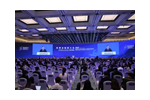
Lu Jianzhong attends Member Representative Symposium of 2022 World Internet Conference
9 Nov 2022
On November 8th, as a prelude to the 2022 World Internet Conference (WIC) Wuzhen Summit, the WIC Member Representative Symposium was held on the venue in ZhejiangProvince. This is the first symposium since the establishment of WIC International Organization, aiming to enhance exchange and cooperation between the organization and its members, and among the membersthemselves. Zhuang Rongwen, chairman of the WIC Organization Committee,attended and addressed the symposium. The eventwasmoderated by WIC Secretary GeneralRen Xianliang. More than 30 member representatives from international organizations, leading global Internet companies, industry authorities and associations listedthe symposium. Lu Jianzhong, chairman of the Board of Directors of Tang West Market Group and chairman of the Silk Road Chamber of International Commerce,discussed with other representatives about the opportunities and challenges brought by the development of global internet and the prospects of WIC.
Zhuangpointed out that as a common platform for the global Internet family, the WIC originates in China but belongs to the world. He hoped that members would contribute their suggestions to the Conference, participate initsconstructionand support its development. Members need to build consensus on ideas, focus on new challenges and problems in cyberspace, and align the efforts of international community to resolve differences.Thedeepeningintegration of digital economy and real economy, and coordination of global industrial and supply chainsare the focuses in developing the digital economy. Members shouldboostscientific and technological innovation, strengthen international collaborationand global cooperation, and exchangevisions and applications of Internet-related technology. Members should deepen cultural exchanges, promote cooperation in internet media, and strengthen the construction of internet culture. Members shouldalsofocus on leading global cooperation, pursuingcommon prosperity for all mankind, deepeningcommon interests and promoting mutual benefit in the Internet sector.
LuJianzhongbriefed thethree platformsbuilt by Tang West Market Group, namely the Datang Chain, the Hainan International Cultural and Art Trading Center,and the Silk Road Chamber of International Commerce (SRCIC). The platforms are part of the contributing efforts tothedigital cultural industry,the cultural cause,and the construction of Digital China.He suggestedbuildinga multi-chain, cross-chain and internationally-oriented blockchain infrastructure for cultural and art transactions and a cultural digital Silk Road, which can be based on theDatang Chain, a national blockchain anda pilot project of copyright innovativeapplication. The international resources and industrial advantages of SRCICcould also contribute to this cause. The proposal outlines a cultural digital platform for artworks trading and exchange among various countries. The platform integrates functions including ownership validation, authentication, pricing, sequencing and confirming. Together, they resolve the three pain points of the industry - appraisal, valuation and standardization of artworks. This endeavor will boost international cultural and art exchanges and transactions, and enhance mutual learning among civilizations along the Belt and Road.
The WIC International Organizationwas established on July 12 this year. It is an international, industrial and non-profit social organization set upvoluntarily by enterprises, organizations, institutions and individuals committed to facilitatingthe global Internetdevelopment. It was registered in China and headquartered in Beijing.
Source: World Internet ConferenceWeChat Official Account
SRCIC Vice Chair Maria Fernanda Garza elected as new ICC Chair

SRCIC Vice Chair Maria Fernanda Garza elected as new ICC Chair
16 Jun 2022
The International Chamber of Commerce (ICC) is delighted to welcome Maria Fernanda Garza as its new Chair. After serving as ICC First Vice-Chair for the past two years, the small business owner from Mexico succeeds Ajay Banga as ICC Chair, making her the first woman to hold this position.
Maria Fernanda Garza has been elected ICC Chair for a period of two years following a meeting of the ICC World Council, held yesterday in Mexico City. The ICC World Council additionally elected Philippe Varin, Chair of ICC France, as ICC First Vice-Chair, and Nayla Comair Obeid and Harsh Pati Singhania as ICC Vice-Chairs.
Ms Garza is CEO of Orestia, as well as SRCIC Vice Chair, a small manufacturing home improvement solutions company based in Mexico, with exports to the USMCA region, Latin-America and Asia. A lifelong advocate for small and medium businesses in her home country and around the world, she participated 19 years in the Mexican Employers' Association (COPARMEX) and served as Vice-President for four years.
In her new role, Ms Garza will continue to drive ICC's mission to make business work for everyone, every day, everywhere.
Commenting on her election, Maria Fernanda Garza said: "Given the magnitude of the downside risks facing the global economy, it's absolutely vital for us to have a united business voice committed to openness, fair competition and the enablement of peace through international trade.”
"In a period that has been characterized by weak international cooperation, I believe that ICC has a vital role to play in harnessing the expertise, innovation and networks of the private sector to secure an effective response to major global challenges. Simply put, our mission to enable peace and prosperity through trade has never been more vital — and, indeed, more urgent."
Ms Garza's interest in improving the business environment made her a prominent business leader at a young age. She was the ICC Regional Coordinator for the Americas and a member of the governing body of the ICC International Court of Arbitration. An ICC Executive Board member since 2014, Ms Garza became the first woman to be elected as ICC First Vice-Chair in 2020.
A strong advocate of business ethics and corporate governance standards, Ms Garza was Chair of ICC Mexico until June 2020 and is a former member of the International Affairs Advisory Committee of the Ministry of Labour and former member of the National Advisory Committee of ACLAN. She is also a Board Member of the Corporate Responsibility Alliance AliaRSE and was a member of the Corporate Responsibility Network of the Business and Industry Advisory Committee to the OECD.
ICC Secretary General John W.H. Denton AO said: "In her new capacity as Chair, Maria Fernanda's experience and insights as CEO of a successful small business will further reinforce the work we do and help ensure that ICC reaches the whole of the international business community. She has already contributed greatly to ICC's work at the global, regional and national levels, and we are very happy that she will remain a strong champion for ICC and challenge us to push ahead to promote more inclusive growth and prosperity."
Effective 14 June 2022 for a two-year term, Ms Garza succeeds Ajay Banga in the role. We take this opportunity to thank Mr Banga for his outstanding leadership of our organisation during the past two years, a particularly challenging and uncertain time for businesses worldwide. Mr Banga will continue to serve on the ICC Executive Board as Honorary Chair.
The ICC World Council also elected six new members of the ICC Executive Board for three-year terms, strengthening gender, ethnic and geographical diversity in ICC's leadership.
Holger Bingmann, Managing Partner, Bingmann Pflüger International GmbH (Germany)
Rebecca Enonchong, CEO, AppsTech and Chair of Afrilabs (Cameroon)
Marjorie Yang, Chairwoman, Esquel Group (Hong Kong)
Lama Al Sulaiman, Shareholder and a Board Member of Rolaco Holdings, KSA, and LUX (Saudi Arabia)
Nicolas Uribe, Chair, Bogota Chamber (Colombia)
Justin D’Agostino, CEO, Herbert Smith Freehills (Hong Kong)
Fredrik Cappelen, Chair at Dometic and Transcom (Sweden), and Candace Johnson, Vice-Chair at NorthStar Earth and Space (Luxembourg/United States) are starting second terms as members of the ICC Executive Board.
The ICC World Council additionally ratifiedthe election of Nicolas Uribe, President of the Bogota Chamber of Commerce and Chair of ICC Colombia, as Chair of the ICC World Chambers Federation. His term begins on 1 July 2022.
Source: iccwbo.org
Lum Wan Liang, Consul General of Consulate General of Malaysia in Xi'an and his delegation paid a visit to SRCIC Secretariat
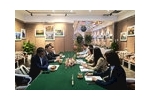
Lum Wan Liang, Consul General of Consulate General of Malaysia in Xi'an and his delegation paid a visit to SRCIC Secretariat
28 Apr 2022
SRCIC Secretary General Diane Bian held a talk with Lum Wan Liang, Consul General of Consulate General of Malaysia in Xi'an and his delegation
On April 27, 2022, SRCIC Secretary General Diane Bian held a talk with Lum Wan Liang, Consul General of Consulate General of Malaysia in Xi'an, Loh Kai Yong and Raymond Raman, President and Secretary General of the Xi'an Branch of Malaysian Chamber of Commerce and Industry in China (MAYCHAM CHINA).
SG Bian first extended welcome to Consul General Lum Wan Liang and his delegation. She pointed out that SRCIC has been committed to building a cooperation platform between governments and enterprises. Despite the suspension of offline activities due to the COVID pandemic, the long-standing cooperation and friendship between SRCIC and its members and partners continues. It is expected that in the post pandemic period, SRCIC and Malaysian Consulate can resume cooperation and share new opportunities for investment and development by co-sponsoring business promotion seminars and other activities.
SG Diane Bian and Consul General Lum Wan Liang
Although it was only his first visit to SRCIC, Consul General Lum said he had an understanding of it through MAYCHAM CHINA and affirmed SRCIC's achievements since its establishment. Subsequently, he introduced the Consulate General of Malaysia in Xi'an, and said that today's meeting is only a beginning to the many more opportunities to discuss cooperation in depth in the future.
The meeting was also attended by Emma Wei, Director of SRCIC Membership Center Section I, Alina Cao, Director of SRCIC Membership Center Section II, and Valentina Wang, Deputy Director of of SRCIC Membership Center Section II.
Japan encouraged to seize BRI opportunities

Japan encouraged to seize BRI opportunities
16 Apr 2024
People from all walks of life in Japan can objectively view the Belt and Road Initiative and seize more cooperation opportunities, as joint BRI construction provides a pathway for building a community with a shared future for mankind, says Chinese Ambassador to Japan Wu Jianghao.
Any country committed to shared development can take part in the BRI as an equal partner and gain from it, regardless of their political system, history, culture or stage of development, Wu said.
Since the launch of the BRI in 2013, the joint construction of the initiative has entered a stage of high-quality development.
Over the past 11 years, the BRI has achieved fruitful results, becoming the widest-ranging and largest-scale international cooperation platform in the world, Wu told a forum organized by the Japan-China Belt and Road Initiative Promotion Association in Tokyo last week.
"The joint construction of the BRI practices true multilateralism, does not exclude or target any party, does not engage in geopolitical games, does not form closed and exclusive 'small circles', does not impose values and development models, and certainly does not form military alliances."
Therefore, the joint construction of the BRI can maximize consensus, overcome obstacles and become increasingly accepted by the international community, he added.
Developing countries have embraced the initiative as it aims to resolve their significant challenges, including infrastructure, funding, technology and expertise, Wu said.
Some Western countries have been accusing China of creating "debt traps" in developing countries, which is pure misinformation, he said.
Data from the World Bank showed Western commercial and multilateral institutions hold two-thirds of the debt obligations of low- and middle-income countries in the next seven years, while China only accounts for 14 percent of such debts.
Wu called on Japan to listen to the voices of its companies, as many are involved in Belt and Road cooperation and have benefited from it.
Many Japanese companies are using China-Europe freight trains and river-sea transportation to expand business opportunities. Collaborations between Chinese and Japanese companies and financial institutions in third-party markets have yielded positive results, spanning sectors such as infrastructure, eco-financing, logistics and clean energy.
"The facts prove that the BRI is an opportunity for Japan, not a threat," Wu said.
China is willing to work with all countries to achieve high-quality development of the BRI on a larger scope, in broader fields and at a deeper level, he said. As a close neighbor and key partner of China, Japan is welcome to take part in the joint construction of the BRI.
Attendees to the forum included the Japan-China Belt and Road Initiative Promotion Association's President Kazuyuki Hamada, and its representative Yoshikazu Ono. They said the association will vigorously promote a better understanding of the BRI among various sectors of Japanese society and actively take part in the joint construction of the initiative.
Source:China Daily Global
Forum set to deepen BRI ties and promote infrastructure

Forum set to deepen BRI ties and promote infrastructure
16 Apr 2024
The Digital Silk Road Development Forum of the World Internet Conference aims to build a platform for exchanges and cooperation among countries and regions involved in the Belt and Road Initiative, promote the construction of network infrastructure, reduce the digital divide and create a better digital future, according to a senior WIC official.
"It is the first time that the WIC is holding a thematic forum centered on the Digital Silk Road, which combines the development of the digital economy with the Belt and Road Initiative," said Ren Xianliang, secretary-general of the World Internet Conference.
By advancing the construction of the Digital Silk Road, Ren said China has deepened exchanges and cooperation with BRI economies in fields including digital infrastructure, digital technologies and digital market, promoted the digital transformation of related countries and regions, effectively narrowed the digital divide, and shared digital achievements.
Themed "Connectivity and Shared Prosperity", the WIC Digital Silk Road Development Forum on Tuesday in Xi'an, Shaanxi province, will focus on three topics — "Digital Connectivity and Cooperation in Building the Silk Road", "Silk Road E-commerce International Cooperation" and "Digital Villages and Sustainable Development".
Organizations and enterprises from nearly 50 countries and regions, including the Global System for Mobile Communications Association (GSMA), the Shanghai Cooperation Organization, Intel, SAP, Nokia, Micron, ZTE and Alibaba have confirmed their participation in the forum.
The WIC held a member representative symposium on Monday. Cross-border e-commerce training classes and seminars on assessing the competitiveness of cross-border e-commerce will be launched to cultivate the relevant talent for BRI economies and provide practical experience for the innovative development of the cross-bolster e-commerce industry, Ren said.
China has made significant progress in the construction of the Digital Silk Road.
By end-2022, China had signed memorandums of understanding on building the Digital Silk Road with 17 countries, and on e-commerce cooperation with 30 countries, according to a white paper released by China's State Council Information Office.
Noting that the Silk Road e-commerce connects BRI economies and promotes economic development, Ren said the Digital Silk Road cross-border e-commerce workshop, which will officially kick off on Wednesday, is conducive to deepening exchanges and cooperation among China and other BRI economies, and building an exchange and mutual learning platform about the cross-border e-commerce industry.
Professionals and experts from the International Trade Center, the E-Commerce Business Alliance Expert Committee of the Asia-Pacific Economic Cooperation, comprehensive pilot zones for cross-border e-commerce, universities and cross-border e-commerce enterprises will be invited to discuss the new opportunities, challenges and the best practical experience in the fast-developing sector during the workshop, Ren said.
He added that the forum is also expected to bolster the facilitation of cross-border e-commerce, promote data flows and sharing, as well as allow more countries and regions to share new development opportunities brought about by digital technologies.
China's cross-border e-commerce sector has become an important driving force for bolstering development of the nation's foreign trade, experts said.
Data from the General Administration of Customs showed that, based on preliminary calculations, the import and export scale of the country's cross-border e-commerce transactions reached 577.6 billion yuan ($79.8 billion) in the first quarter of this year, up 9.6 percent year-on-year.
Source: China Daily
Jointly fostering digital connectivity in building the Silk Road

Jointly fostering digital connectivity in building the Silk Road
15 Apr 2024
Themed on "Connectivity and Shared Prosperity", the World Internet Conference (WIC) Digital Silk Road Development Forum will be held on April 16 in Xi'an, Northwest China's Shaanxi province.
For thousands of years, the Silk Road has forged new path facilitating exchanges among different countries, something it continues to do for countries along the Silk Road, achieving higher-quality development and common prosperity.
The host city of the WIC Digital Silk Road Development Forum, Xi'an, has made significant strides in deepening the Belt and Road cooperation. In 2023, Shaanxi projected that the province's digital economy expected to reach a scale of 1.4 trillion yuan, while Xi'an, the starting point of the ancient Silk Road, saw the added value of its core digital economic industries accounting for over 9 percent of its GDP the same year.
Through this forum, the WIC will continue to build a global platform for communication and cooperation, deepening exchanges and collaboration among countries and regions involved in the BRI in digital technology, digital infrastructure, and digital markets, so as to bridge the digital divide and jointly build a community with a shared future in cyberspace.
Source:wicinternet.org
Gateway to the future

Gateway to the future
12 Apr 2024
Revitalized Belt and Road Initiative is helping to propel Malaysia's transformation into a high-tech nation
The Belt and Road Initiative has catalyzed socioeconomic development in Malaysia and the broader region. As the BRI embarks on its second decade, expectations are high that it will continue to facilitate the transition of the developing world toward more sustainable growth and enable it to embrace the opportunities presented by the Fourth Industrial Revolution.
In 1974, Chairman Mao Zedong and then Malaysian prime minister Tun Abdul Razak convened in Beijing to establish diplomatic relations between China and Malaysia. This year commemorates the 50th anniversary of that historic event. Half a century later, the bond between the two countries has never been stronger.
In 2023, Malaysian Prime Minister Anwar Ibrahim made two visits to China, emphasizing the significant importance he places on fostering a strong relationship between the two countries. Among various agreements, Prime Minister Anwar and Chinese President Xi Jinping committed to cultivating trust between the world's diverse cultures through the Global Civilization Initiative.
Economic cooperation has always been the cornerstone of the China-Malaysia relationship. Over the past decade, the BRI has emerged as a pivotal catalyst, further driving and shaping this robust economic collaboration between the two nations. In 2022, China-Malaysia trade reached $203.59 billion, up 15.3 percent year-on-year. China has been the largest trading partner of Malaysia for 15 consecutive years since 2009, accounting for 17.1 percent of Malaysia's total external trade in 2023.
The BRI carries unique historic significance for the China-Malaysia relationship. The maritime route retraces the 15th century voyages of Admiral Zheng He, who made notable stopovers in the Sultanate of Melaka. These visits during the Ming Dynasty (1368-1644) laid the foundation for the initial diplomatic and civilization ties between ancient China and the Malay world. Naturally, the BRI today serves as a rekindling of an old friendship established some 600 years ago.
Over the past decade, China has invested in a diverse array of projects in Malaysia through the BRI, including the East Coast Railway Link, the Malaysia-China Kuantan Industrial Park, the Trans-Sabah Gas Pipeline and various others.
These initiatives have generated significant development and transformed Malaysia's social and economic landscape. However, the COVID-19 pandemic caused disruptions to the progress of the BRI in Malaysia, as it did elsewhere.
Great power rivalry and geopolitical tension have also posed challenges, with trade tariffs and sanctions disrupting supply chains and undermining economic growth. Malaysia, along with the Association of Southeast Asian Nations in general, remains committed to a policy of open and free trade, actively engaging with China and all other relevant stakeholders dedicated to fostering the common good.
In fact, since its inception, the BRI has evolved beyond the conventional infrastructure focus, expanding into diverse sub-initiatives such as the Health Silk Road, the Green Silk Road, and the Digital Silk Road.
The Health Silk Road, for instance, has become part of the BRI framework in Malaysia. During the COVID-19 pandemic, China's assistance in supplying vaccines not only aided Malaysia in managing the crisis, but also facilitated the development of China's own vaccine capabilities. Subsequently, China has committed to supporting Malaysia's vaccine research and production, reflecting a collaborative effort aligned with the Health Silk Road's goal of enhancing global public health.
In recent years, China has emerged as a trailblazer in renewable energy and green manufacturing. Through the framework of the Green Silk Road, it strategically positions itself at the vanguard of the global green technological revolution, benefiting developing countries such as Malaysia. Beyond solar panels and electric vehicles, Chinese-manufactured hydrogen buses are playing a pivotal role in Malaysia's ongoing transition to renewable energy.
China's remarkable transformation into a technological powerhouse has given rise to another new subdivision, namely, the Digital Silk Road. This initiative is expected to assist Malaysia and other nations in embracing the digital age. For example, Huawei is anticipated to launch Malaysia's second 5G network, contributing significantly to the country's technological progress. Moreover, Alibaba has selected Malaysia as its regional e-commerce hub and has entered into an agreement to transform Kuala Lumpur into the first "smart city" outside of China using Alibaba technology.
In 2023, while visiting the China-ASEAN Expo in Nanning, the Guangxi Zhuang autonomous region, Prime Minister Anwar secured China's renewed commitment to support Putrajaya's New Industrial Master Plan 2030. This plan is expected to harness the Digital Silk Road to propel Malaysia into a high-tech nation.
As the China-Malaysia relationship celebrates its 50th anniversary, the two countries are expected to enter into a new era of closer people-to-people bonds and enhanced economic cooperation, driven by a revitalized BRI.
Indeed, as it embarks on its second decade, the BRI has evolved into "a road of science and technology" that places innovation high on the agenda, ready to expedite the transition of the developing world, including Malaysia, into the digital age and a future defined by technological possibilities.
The author is a research associate at the Institute of China Studies at the University of Malaya. The author contributed this article to China Watch, a think tank powered by China Daily.
Source: China Daily
Shanghai unveils priorities to advance Belt and Road Initiative in 2024

Shanghai unveils priorities to advance Belt and Road Initiative in 2024
11 Apr 2024
To promote the high-quality development of the Belt and Road Initiative in 2024, Shanghai will focus its efforts on the following nine aspects:
1. Deepen regional coordination and collaboration to synergize the integrated development of the Yangtze River Delta with the high-quality development of the BRI
(a)Expedite the establishment of the Belt and Road High-quality Development Promotion Association of the Yangtze River Delta.Support the global expansion of the YRD region'sadvantageous industries, quality equipment, applicable technologies, and standards, thereby enhancing the collaborative openness in the region to boost the high-quality development of the BRI.
(b) Continuously strengthenBRI information sharing and resource aggregation. Consolidate and enhance the functions of the Shanghai Belt and Road Comprehensive Service Center.
Continuously enrich the functions of the WeChat mini-program dedicated to providing information and services related to the BRI, known as Silk Road e-Together (丝路e启行).
2. Consolidate the foundation of cooperation and actively contribute to building the Belt and Road Connectivity Network
(a) Enhance the service capabilities of Shanghai Port andexpedite the collaborative efforts with the YRD to establish a global shipping hub.
(b) Actively engage in the formulation of international maritime technical rules and standards, leading thetransformation of shipping towards green, digital, and smart directions.
(c) Strengthen collaboration among Shanghai airports and other airports in the YRD in terms of functional positioning, planning and construction, operational management, ground transportation, and other aspects. This will continuallyenhance the coverage and accessibility of Air Silk Road routes.
(d) Strive to increase the routes and frequencies of Shanghai-Europe freight trains.
3. Actively integrate into the global economy and cultivate collaborative flagship brands
(a)Organize the seventh China International Import Expo effectivelyand encourage the participation of high-quality products and services from countries involved in the BRI.
(b)Accelerate the development of Silk Road E-commerce cooperation pilot zones, facilitatingcultural exchanges, trade, and product exhibitions and sale. Utilize Shanghai's technological and engineering contracting advantages to support the construction of landmark projects and "small yet smart" initiatives.
(c)Foster the high-quality development of industrial Internet of Things service platforms, providing new impetus for economic cooperation within the BRI framework.
Facilitate trade and investment promotion agencies in hosting exhibitions in BRI countries, vigorously attracting enterprises from those countries to invest in Shanghai.
4. Continuously deepen pragmatic cooperation in the financial sector, offering stable, transparent, and high-quality financial backing for the BRI
(a) Continuouslyrefine the renminbi clearing and settlement networkto elevate the standard and quality of cross-border renminbi services for the BRI.
(b) Support financial institutions in Pudong New Area to explore opportunities forproviding cross-border investment and financing, as well as other financial services, in line with international standards and practices. This aligns with Pudong's efforts to establish itself as a leading area, a pilot free trade zone, and to develop its Lin-gang Special Area.
(c)Deepen the bilateral opening-up and connectivity of financial markets, fostering an improved environment for equity and debt financing for enterprises involved in the BRI. Actively address overseas investors' demand for renminbi-denominated assets and their risk management requirements.
5. Jointly promote green development and expand cooperation in new sectors
(a) Encourage enterprises to participate in the joint development of national projects in sectors likegreen infrastructure, green energy, and green transportationin BRI countries.
(b)Support the establishment of the Green Technology Bank in Phnom Penhin collaboration with the Cambodian government to facilitate international cooperation in green technology innovation.
(c) Host theShanghai International Carbon Neutrality Expowith high quality, providing more green solutions for green and low-carbon development in BRI countries.
(d) Strive to introduce a series of globally influential Green Silk Road demonstration projects in green industries based onenvironmental, social, and governance (ESG)principles.
(e)Explore innovative breakthroughs in green financial products related to the BRI, guiding sustainable development of overseas projects through policy-oriented financing.
6. Strengthen cooperation in scientific and technological innovation
(a) Establish joint laboratories with BRI countries tofacilitate collaborative research, as well as commercialization and application of research outcomes.
(b) Promote key platforms such as the Yangtze River Delta National Technology Innovation Center, the Shanghai Technology Exchange, and the China-Israel (Shanghai) Innovation Park to broaden the scope of cooperation and engage with more regions.
(c)Facilitate Shanghai enterprises in their global expansion efforts by fostering industrial investment cooperation with BRI countries, especially in critical sectors such as information services and new energy design systems.
7. Enhance people-to-people exchanges
(a) Cultivate dialogue between civilizations with BRI countries
Further develop the Network of Silk Road Arts Festivals.
Promote the Network for Joint Promotion of Culture and Tourism in Sister Cities in the BRI Context.
Showcase Shanghai-style cultural and tourism projects, such as the eight-episode documentaryChina Before China, andA Dialogue with the World, a series of arts and cultural relics exhibitions held by the Shanghai Museum.
Explore diverse mechanisms for organizing film tours featuring movies from BRI countries.
(b) Strengthen education cooperation with BRI countries
Carry out advanced training programs.
Encourage the internationalization of professional standards and curriculum standards for vocational education.
(c) Enhance healthcare cooperation with BRI countries
Build a high-level overseas traditional Chinese medicine center.
Establish a base for the commercialization and international promotion of TCM achievements.
Promote the development of TCM services trade.
(d) Foster sports cooperation with BRI countries
Utilize international events, conferences, and activities held in Shanghai to actively engage in exchanges and cooperation in sports, research, and industry.
Actively invite teams from BRI countries to participate in Shanghai's signature events such as the Shanghai International Marathon and the Head of Shanghai River Regatta.
8. Improve mechanisms for international cooperation regarding BRI
(a) Actively explore the potential of sister city cooperation and enhance the integration and design of projects promoting friendly exchanges.
(b) Support think tanks in Shanghai to deepen collaboration with their counterparts from BRI countries through project cooperation, facilitating mutual learning and the sharing of development concepts and governance experiences.
9. Strengthen compliance management and foster a clean Silk Road
Guide enterprises expanding globally to establish compliance management systems, enhance their self-discipline, legal awareness, and sense of responsibility, and standardize their overseas business operations.
Source: Shanghai Municipal Development and Reform Commission
Interview: China-Europe Railway Express vitalizes regions along its route, says German expert

Interview: China-Europe Railway Express vitalizes regions along its route, says German expert
10 Apr 2024
DUISBURG, Germany, April 8 (Xinhua) -- The China-Europe Railway Express has injected vitality into Duisburg, a key transportation hub in the Ruhr region of Germany, and has opened up new development opportunities for the countries and cities along its route, a German professor has said.
Bernd Noche, a professor at the University of Duisburg-Essen in Germany and head of the Department Transport Systems and Logistics, told Xinhua in a recent interview that Duisburg is emerging as a pivotal hub for connectivity and trade between China and Europe, thanks to the China-Europe Railway Express project, which connects 120 Chinese cities with 219 cities across 25 European countries.
According to data from Duisport, the ownership and management company of the Port of Duisburg, connections between Chinese cities and Duisburg now take between 12 and 18 days for transportation.
Approximately 60 trains arriving on the China-Europe Railway Express reach Duisburg each week, with the goods on the trains subsequently transported to domestic seaports or neighboring countries in Europe.
The China-Europe Railway Express introduces a more balanced mode of transportation, the German professor said. "When we consider railway connections, this is now a unique mode of transport because it is faster than a ship, but lower price than by plane. So, it's something in between," he said, adding that there were a lot of goods suitable for rail transportation.
Noche also noted that the "Belt and Road Initiative" has great potential to form a "new Silk Road," connecting different regions along the route which the China-Europe Railway Express runs.
The Belt and Road Initiative (BRI), of which the China-Europe Express Rail is a flagship project, was proposed by China in 2013 and aims to build a trade and infrastructure network connecting Asia with Europe, Africa and beyond.
"We want to involve further countries, Kazakhstan, for instance, I think that's the big chance," Noche said.
Noche was equally encouraged to discover that many people in Kyrgyzstan had shown their interest in the "Belt and Road Initiative" and were willing to get involved in it, inputting their ideas and providing local goods.
Agricultural products made in Kazakhstan can now be quickly delivered to western Europe or China by train along the China-Europe railway, Noche said.
As an expert on the transportation and logistics industry, Niche has been researching potential development opportunities that the "Belt and Road Initiative" can bring to the countries that are involved in it.
He initiated a project named "Regional Sustainable New Silk Road Initiative" at the University of Duisburg-Essen in 2019 in a bid to explore the possibilities of supporting the development of companies in Duisburg and its neighboring areas, advancing cooperation, as well as promoting innovation and exchanges.
The first phase of the project, participated by 23 organizations, has been completed. Moving forward, Noche and his team are eager to seek more international partners to further propel the project forward, because he views the Belt and Road Initiative as an opportunity for "win-win cooperation and prosperity."
Source: Xinhua
CAEXPO supports ASEAN centrality: Daryl Guppy

CAEXPO supports ASEAN centrality: Daryl Guppy
21 Sep 2023
Editor's note:Daryl Guppy, a special commentator on current affairs for CGTN, is an international financial technical analysis expert. He has provided weekly Shanghai Index analyses for mainland Chinese media for more than a decade. Guppy appears regularly on CNBC Asia and is known as "The Chart Man." He is a former national board member of the Australia China Business Council. The article reflects the author's opinions and not necessarily those of CGTN.
The 20th China-ASEAN Expo (CAEXPO) and China-ASEAN Business and Investment Summit in Nanning are two of the most significant events in the ASEAN region. It is more than just a trade expo with the usual fascinating array of goods and products on display. These are important, but it's the dialogues and meetings that deliver the full significance of CAEXPO because they provide a strategic guide to regional policy development.
In 2014, I was invited to speak in the first Australian partner participation in CAEXPO. I got to know the outline of the 21st Century Maritime Silk Road and how this meshed with what is now the Belt and Road Initiative (BRI). It was the first time the concept had been explained fully to an international audience and the impact was significant. It set the parameters for business engagement and development in the following decade and more.
This year's CAEXPO has continued that tradition of policy commitments with the opening ceremony speech by Chinese Premier Li Qiang. He emphasized the significance of building a closer China-ASEAN community. These remarks followed the recent ASEAN meeting in Jakarta where the issue of ASEAN centrality in regional decision making was a major point of discussion.
Li acknowledged ASEAN centrality in the process of forging smooth China-ASEAN relationships. This is another important indication of China's desire to work within existing regional trade structures of which CAEXPO is a practical example. This is a direct counter to the approach taken by the United States which seeks to undermine ASEAN centrality in regional decision making by turning organizations like the Regional Comprehensive Economic Partnership (RCEP) into a geopolitical platform.
Echoing decade-old remarks, Li placed ASEAN countries at the intersection of the "Belt and Road" on both land and sea. They reflected the historical connections of China trade from the ancient land-based Tea Horse Road and the maritime trade centers in the Straits of Malacca. His remarks provided a clear indication of the vitality and growth of the BRI. This came as a shock to Western observers who have been led to believe that the BRI is a spent force. Nothing could be further from the truth as the multi-faceted BRI continues to expand its engagement with ASEAN in many key areas.
The BRI is not just about physical infrastructure. It includes capital infrastructure investment to connect Chinese and ASEAN financial markets. It includes trade and soft infrastructure co-ordination to make cross border trade and settlement more efficient. The establishment of common digital standards across ASEAN is an essential foundation for progress in these areas.
Consistent with the objectives of the BRI and ASEAN, the expo has a strong emphasis on the digital economy and green economy. The theme of the expo particularly supports businesses operating in emerging sectors of new information technology and new energy.
CAEXPO shows that China is committed to expanding cooperation in culture, tourism, training, and youth exchange because these foster mutual understanding and friendship between the people of the region. The success of the expo in terms of the number and variety of participants, shows that China is a growing economy determined to continue its engagement with the region.
On one level, CAEXPO provides an important platform for exhibitors to highlight products and services available within the region and which form the foundation of trade relationships.Many are the traditional products of trade, but they also include the breakthroughs seen with the Huawei Mate60 built on China developed chip technology.
One feature overlooked in the colourful displays of ethnic dress and custom is that CAEXPO is held in Nanning, the capital of south China's Guangxi Zhuang Autonomous Region. This is just one of five Autonomous regions in China, a factor rarely recognized in Western media coverage which paints China as a monolithic state. These regions illustrate the cooperative pathway that is an essential part of prosperity in the ASEAN region.
On another level, CAEXPO provides the political and strategic framework that underpins the broad improvement of trade relationships, peace and prosperity within the region. Premier Li's remarks confirmed China's commitment to regional prosperity and cooperation within the ASEAN framework.
Source: CGTN
Francis Chua Was Invited to Attend The East Expo in Nanning, Received By Premier Li Qiang of The State Council
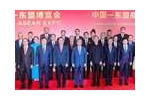
Francis Chua Was Invited to Attend The East Expo in Nanning, Received By Premier Li Qiang of The State Council
20 Sep 2023
The picture shows Chinese Premier Li Qiang (center) taking a group photo with Amb. Francis Chua (fifth from left, front row) and well-known ASEAN entrepreneurs.
Philippine Chamber of Commerce and Industry News:Ambassador Francis Chua, Permanent Honorary Chairman of the Philippine Chamber of Commerce and Industry, Founding Chairman of the Philippine International Chamber of Commerce and Founding Chairman of the Philippine Silk Road International Chamber of Commerce as well as the SRCIC Vice Chairman, at the invitation of the host, Ministry of Commerce of China, China Council for the Promotion of International Trade, the Government of Guangxi Autonomous Region and Guangxi Council for the Promotion of International Trade, on September 15, went to Nanning, Guangxi Province to attend the 20th China-Asean Expo and China-Asean Business and Investment Summit, and as the only representative guest of the Philippines, met with Chinese Premier Li Qiang and took photos with well-known ASEAN entrepreneurs, and attended the State banquet.
The theme of this East Expo is "Building a home with harmony and Coexistence, Sharing the Future with Destiny - Promoting high-quality Development of the Belt and Road and Building an Economic Growth Center", during which the side meeting on the theme of "Institutional Opening: At "New Pattern of Regional Economic Development" will be held the first time. Representatives from ASEAN countries will have in-depth discussions and exchanges on the steady expansion of institutional openness of rules, regulations, management and standards in the region. At the same time, activities such as the "Year of Investing in China - Entering Guangxi" special event and the "Face to Face with the Business Counsellors of Chinese Missions in 10 ASEAN countries" exchange meeting will also be held to showcase China's investment opportunities, build a platform for multinational companies to understand China and invest in China, and convey to the world China's confidence and determination to unswervingly promote a high level of opening-up.
This East Expo will focus on China-Asean Free Trade Area 3.0, RCEP, the "Belt and Road" and other multilateral and bilateral cooperation mechanisms, continue to hold the third RCEP Summit Forum and other institutional activities, issued the "China-Asean Free Trade Area 3.0 Business Opportunities Outlook" blue book, guide regional enterprises to better grasp the new economic and trade rules, better share the RCEP high-quality implementation of the new dividends.
Writer/Picture:Pol Ongkinglok
Linguister/Editor:Stephanie Tan
Qinghai's Achievements in Practicing Xi Jinping Thought on Socialism with Chinese Characteristics for a New Era
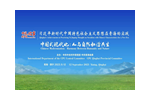
Qinghai's Achievements in Practicing Xi Jinping Thought on Socialism with Chinese Characteristics for a New Era
14 Sep 2023
Qinghai's Achievements in Practicing Xi Jinping Thought on Socialism with Chinese Characteristics for a New Era,cohosted by the International Department of the CPC Central Committee and the CPC Qinghai Provincial Committee, was held in Xining,Qinghai Provinceon September12. The theme of the event was Chinese Modernization: Harmony Between Humanity and Nature.Over 150 political party leaders or representatives from nearly 30 countries attended the event in person and online.
Mr. Mohammad Omer,the SRCIC member andDirector of the China-Africa Center for Technology Transfer and Commercialization,was invited to the event. Mr. Omer expressed his appreciation and thanks to the International Department of the CPC Central Committee and the CPC Qinghai Provincial Committee for co-hosting this important event. He underlined how the world can learn from Qinghai's experience of Chinese Modernization in the New Era. Andpointed out that this eventrelates well to the Global Development Initiative proposed by H.E. President Xi and where China-Africa Center for Technology Transfer and Commercialization signed its Declaration. In conclusion, Mr. Omer said that Qinghai's success on achieving harmony between mankind and nature contributes to the realization of the Green Silk Road and Building Jointly an Ecological Community of Shared Future for Mankind.
Adnan Akfirat - A miracle in the heart of Asia: Horgos!

Adnan Akfirat - A miracle in the heart of Asia: Horgos!
5 May 2023
By Adnan Akfirat,Chairman of the Turkish-Chinese Business Development and Friendship Association
Can there be a port at the farthest distance from the sea?
I went to the Horgos Free Economic Zone, known as the world's largest dry port, which is crossed by both road and rail and will soon have air service. I have seen it, I am writing about it!
AT THE INACCESSIBILITY POLE OF EURASIA
The Horgos Free Trade Economic (FEZ), a joint creation of both countries on the China-Kazakhstan border, lies at the foot of what is known as the Eurasian Pole of Inaccessibility. The Pole of Inaccessibility is a geographical term. It refers to the geographical region on a continent farthest from the seas.
This is the ingenuity of the Asian Century: Eurasia's Pole of Inaccessibility is now the crossroads of transcontinental transportation and manufacturing.
Horgos FEZ, in the north of the Xinjiang Uygur Autonomous Region, on the China-Kazakhstan border, is at the very heart of Asia. And it serves as the heart of trade not only to Asia but also to three continents, including Europe and Africa. Asia and Europe's products pass Horgos by road and rail to reach their destinations. Products arriving by sea are also transported by land and rail to the ends of Asia via Horgos.
Cargo containers that arrive at Horgos FEZ in 5 days by rail from the port city of Lianyungang in eastern China can reach the city of Duisburg in northwestern Germany in 10 days. This connection route, which is 3 times faster than sea transportation and half the cost of air transportation, offers an alternative to investors in terms of time and cost. Goods purchased from Horgos FEZ can be freely shipped to CIS countries without any additional customs inspection or tax.
HERODOTUS' LEGEND COMES TRUE!
Horgos is a historical gateway. It has long been called the Dzungarian Gate (or Altai Pass). It is the only pass through the 4,800-kilometer mountain wall stretching from Manchuria to Afghanistan. It is a convenient natural gateway for riders on horseback between the western Eurasian steppes and the lands further east. It has also been noted for its fierce and almost constant winds.
In his "Histories", Herodotus quotes travelers' reports of a country in the northeast where men with the bodies of lions and the wings of eagles guarded the gold and the North Wind came out of a mountain cave. Hyperborea, a term meaning beyond the point where Boreas, the god of the North Wind, breathed his breath, is the name of a mythical land in Greek Mythology beyond the North Wind, where the sun never fails to shine, the trees are always full of fruit and the meadows are always green. Some scholars argue that there is a connection between the Dzungarian Gate and the home of Boreas, the creator of the North Wind in Greek mythology. Because this gate is at the foot of the Altai Mountains, named after the Golden Mountain. Horgos have replaced the house of Boreas!
BREAKING NEW GROUND IN INTERNATIONAL COOPERATION
The Horgos FEZ is intended to be a game-changing catalyst for international cooperation and trade.
Officially called the International Center for Border Cooperation (ICBC), the five-square-kilometer Free Economic Zone is located in the middle of the Saryesik-Atyrau desert, 670 kilometers west of Urumqi and 380 kilometers east of Almaty.
Horgos, in the Ili Kazakh Autonomous Prefecture of China's Xinjiang Uyghur Autonomous Region, means "the place where camel caravans pass" in Mongolian and "the place where wealth accumulates" in Kazakh.
The new city of Horgos on the Chinese side, the size of New York City, is like an oasis in the desert. On the Kazakh side, the developing Horgos-East Gate Special Economic Zone is recovering rapidly after the pandemic. Many of the China-Europe rail lines pass through here.
Horgos is also the crossroads of the Western Europe-Western China Highway from the Yellow Sea to the Baltic. It is a successful implementation of the Belt and Road Initiative, a massive economic cooperation-trade network of interconnected land and sea ports, special economic zones, new cities, and free trade zones in which 134 countries in Eurasia, Africa, and South America are actively participating.
Horgos is positioned as a gateway for international trade linking east and west and a bridgehead for the opening of the Xinjiang Uygur Autonomous Region to the west. It is the world's first cross-border international free economic zone and China's first special economic zone "inside the country but outside the jurisdiction of customs".
Moreover, with the facilities provided by the Chinese central government and the strong interest of the Uyghur Autonomous Region, the Horgos Local Government offers very attractive investment incentives for setting up manufacturing facilities. The incentives offered by both China and Kazakhstan for Horgos FEZ to become a production base deserve the attention of investors.
THE BRIGHT ROAD OF KAZAKHSTAN
When it first opened in December 2011, the Khorgos FEZ was heralded as a cornerstone of China-Kazakhstan bilateral relations and a prime example of Kazakhstan's broader "Nurlu Yol" plan to diversify its economy beyond energy exports.
Presented in promotional materials as "a huge new city of the future where two civilizations intersect," Horgos FEZ is envisioned as a multicultural economic crossroads where Central Asian Turks, Russians, and Chinese can come together to buy each other's goods, eat each other's cuisine and consume each other's entertainment and culture.
A new city is being built on the Kazakhstan side of the Horgos FEZ. Nurkent is expected to be home to 100,000 people. The first zone is 90% complete. It was announced that the entire development and construction of Nurkent City Phase One will be completed in September 2023. It is planned to be fully completed by 2035. Nurkent is seen as a vehicle to help resettle workers at the Khorgos-East Gate, the largest transportation and logistics hub in the Belt and Road Initiative. These workers will be retrained as a permanent source of labor for the Horgos FEZ, which is already a major trade hub between Kazakhstan and China and is developing into a favored manufacturing zone.
HUGE WORK IN LESS TIME
The Chinese side of Horgos consists of five giant four-story wholesale markets. They are located side by side in blocks, with wide sidewalks and roads between them. No personal vehicles are allowed within the area, and public golf carts and vans transport customers from the shopping complex to the shopping complex. New wholesale markets continue to be added, while unfinished construction projects take up much of the land.
Like Chinese wholesale markets, the inside of the malls is made up of hundreds of small shops and booths rented by individual vendors. Most of the buildings, floors, and corridors are organized by product type. Vendors call out to you as you walk through aisles filled with huge waist-high piles of goods.
But it is important to remember that this is not just a new free trade zone, but an entirely new economy being created. ICBC is just one part of a multi-pronged development initiative to build an entirely new trade, manufacturing, and logistics zone where none existed before. The adjacent Horgos special economic zone is estimated to attract 30,000 workers and their families, while the city of Horgos is being built for 200,000 people. Such large-scale development anywhere takes decades, not just years. China did it in 10 years.
TUCEM OPENS TURKISH BRANDS TO CHINA FROM HORGOS
At the invitation of Mr. Ma Fuming, President of Horgos International Chamber of Commerce, we as the Turkish-Chinese Business Matching Center delegation Mr, Serdar Kulu, Director of TUCEM Xinjiang Uyghur Autonomous Region, and I spent four full days in Horgos between April 26-30. Mr. Rutkay Çakırkaya, the owner of Balizza, one of Turkey's leading women's clothing brands, joined us coming from through Kazakhstan. We were received by Mr. Hao Jianmin, the CCP Secretary of Horgos. The Uyghur, Kazakh, Hui, and Han officials of the Horgos Local Government mobilized with sincere interest to provide the best service.
Here is our good news: On August 12-14, we are organizing a special exhibition and fashion show with Turkish clothing brands in Horgos International Free Economic Zone. Hao Jianmin, Secretary of Horgos CPC, has committed to bringing a delegation of 1000 buyers, including all major garment buyers from the eastern region of China. Turkey is organizing the first international event of Horgos FEZ in a magnificent venue built in the shape of a Chinese Palace. We will continue to report good news from Horgos!
Business people would come to Xinjiang to do business if they were smart enough: Adnan Akfırat

Business people would come to Xinjiang to do business if they were smart enough: Adnan Akfırat
7 Apr 2023
I have been in Urumqi, the capital of the Xinjiang Uyghur Autonomous Region, for a week. It snowed two days long, but now spring is in full bloom. It is invigorating with a blue sky that is rarely seen in Shanghai and fresh clean air. During the holy month of Ramadan, we are in a society that fulfills the obligations of Islam. There is peace and respect for faith.
I will follow the proverb attributed to the great traveler, scholar, and linguist Evliya Çelebi (1): “Keep what you eat and drink and tell what you see”.
The biggest economicdevelopment in progress
According to the 2023 Program of the Government of the Xinjiang Uyghur Autonomous Region, the Region will achieve the fastest economic development in its history in the next five years. The government program, presented by Autonomous Region Chairman Erkin Tuniyaz at the opening session of the 14th People's Assembly of the Xinjiang Uyghur Autonomous Region on January 16, 2023, makes this claim. Erkin Tuniyaz stated that the plan is to exceed China’s national average in all economic indicators over the next five years and announced a GDP growth target of 7 percent for 2023.
The link to grasp: opening up!
In politics, there is a concept called the “ring to grasp”. It is used to refer to the step that, how you tackle and solve a set of problems that come your way, this paves the way for the solution of other problems. In the Uyghur Autonomous Region's “economic boom”, opening up to the outside world has been identified as the “Ring to Grasp”. Xinjiang CPC Secretary Ma Xingrui's experience as the governor of Shenzhen city and Guangdong province played a major role in this change. Prof. Ma Xingrui, one of China’s renowned rocket scientists, was elected to the Political Bureau of the Central Committee at the 20th Congress of the CPC. He is currently ranked 8th in the CPC hierarchy.
Ma Xingrui, who became the Party secretary of the Uyghur Autonomous Region in December 2021 with the great support of the Xi Jinping administration, brought a breath of fresh air to Xinjiang, which we covered in our article titled “More Socialism, Happier Uyghurs” dated June 10, 2022, at Aydinlik Daily in Turkish.
Ma Xingrui is prioritizing a high level of opening up to make Xinjiang a core region of the “Silk Road Economic Belt”, one of the two main pillars of the Belt and Road Initiative.
Neighboring 8 countries, the region is making an intensive effort to mobilize the opportunities of its geographical location. Erkin Tuniyaz announced the full resumption of all services at the Uyghur Autonomous Region's 13 land ports at the beginning of the year.
In an interview with CGTN, Kaiser Abdulkerim, Vice President of the Autonomous Region, explains how they will achieve 7 percent growth: “We will vigorously promote the economic vitality of various market actors; we will create an efficient and good business environment for state-owned enterprises to be bold, private enterprises to be daring, and foreign enterprises to be eager to invest. In the future, we will promote the modernization of agriculture, and support the stable production and quality improvement of the cotton industry. We are very excited to welcome visitors from all over the world. This is a multi-religious, multi-ethnic, multi-cultural society and a place where different civilizations live together. In the coming days, we will utilize these advantages to launch the ‘Xinjiang Tourism Development’ initiative.”
Ma Xingrui's first trip abroad
On Monday, March 27, Ma Xingrui led a large Sichuan government delegation on an official visit to Kazakhstan and Uzbekistan, and Kyrgyzstan. Ma Xingrui is said to have assumed central responsibility for China's opening to the West.
CPC secretaries of provinces and autonomous regions rarely travel abroad. Ma Xingrui was received at the highest level in Kazakhstan, Uzbekistan, and Kyrgyzstan.
In Astana, he met with President Kassym Jomart Tokayev and Prime Minister Alikhan Smailov, and in Tashkent with Uzbek President Shavkat Mirziyoyev and in Bishkek with KyrgyzPresident Sadyr Japarov.
President Tokayev said Kazakhstan wants to deepen cooperation with China on the basis of strategic partnership and eternal friendship. “We are ready to work with our Chinese colleagues to increase trade volume to $35 billion by 2030,” Prime Minister Smailov said.
Smailov and Ma also discussed measures to eliminate bottlenecks at the border. Green corridors have already been opened at two of the five checkpoints. Ismailov also raised the issue of speeding up visa processing for Kazakh trucks entering China.
Ma Xingrui said, “As a region of China, we are responsible for the country’s ties with the West. We see Kazakhstan as a top priority area of cooperation. In general, China’s cooperation with Kazakhstan is carried out through Xinjiang.”
On November 29, during his visit to Uzbekistan, it was announced that they discussed the implementation of joint projects in the field of renewable energy, the development of transport infrastructure, the creation of industrial parks and agricultural clusters in Uzbekistan with the participation of leading Chinese companies. Mutual interest in accelerating the Uzbekistan-Kyrgyzstan-China railway construction project was emphasized.
President Mirziyoyev's office said in a statement: “It is with deep satisfaction that we note the fruitful results of the historic summit held in Samarkand in September last year, which marked the beginning of a new era in Uzbek-Chinese comprehensive strategic partnership relations.” It said.
Ma Xingrui said the purpose of his visit was “to build a bridge of friendship and cooperation between the north and south of the Tienshan and to enable Xinjiang to contribute to writing a new page of friendship between China and Uzbekistan.”
KyrgyzPresident Sadyr Japarov, touching upon China-Kyrgyzstan-Uzbekistan railway construction projectnoted that itwould contribute tothe deepening oftrade and economic cooperation between Kyrgyzstan and XUAR, and would also have amultiplicative effect onthe development ofother sectors ofthe economy.
Inparticular, the parties signed memorandums ofintent toexport electricity toChina and build a500-kilovolt power transmission line Kyrgyzstan-China and small hydropower plants in Bishkek.
Xinjiang really opens to the west with Türkiye
The biggest longing of Uyghurs living in the region is access to Turkish goods. The demand for closer economic cooperation with Türkiye has also been the aspiration of the Autonomous Region's administration, which has made “opening up Xinjiang to the west” a top priority. During our meeting in Urumqi on July 5 last year, Ma Xingrui expressed this desire very strongly and invited us to play a role in developing relations with Türkiye.
Indeed, on Tuesday, March 28, we met with a large government delegation led by Xing Tao, the head of the Trade Administration of the Xinjiang Uyghur Autonomous Region. Xinjiang officials responded positively to all of our requests, reflecting the will of Ma Xingrui.
As TUCEM Turkish-Chinese Business Matching Center, we will organize a special fair and fashion show with the participation of 50 Turkish and European clothing brands in the Khorgos International Free Zone, which is located on the China-Kazakhstan border and has the title of “the world’s largest land port” on July 5-9. The Khorgos International Chamber of Commerce hosts this event.
The President of the Chamber of Commerce, Ma Fuming, is a Hui Muslim. We negotiated and signed the agreement for the Special Fair and Fashion Show during two iftar meals in our honor.
Again, we undertook the Turkish representation of the “Eurasia Commodity and Trade Fair” and “The Tienshan International Shopping Festival” to be held on August 17-21. We will organize the Turkish fashion show in Urumqi as well, and we will create a wind of modern clothing and lifestyle.
In addition, we will serve Türkiye’s leading food, cosmetics, and daily use items to reach 1 billion 400 million Chinese consumers through the Xinjiang market. The Deputy Secretary of the China-Eurasia Expo is an Uyghur: Ms. Mihrigul Tursun.
We also have good news: We have started working to transform a 60 thousand square meter shopping center in Urumqi into an “imported products duty-free sales center”.
Xinjiang government invites Turkish merchants and investors
There have been no terrorist incidents in the region for the last 6 years. Relations between ethnic groups in the region are being repaired. Uyghur villagers are being taught Chinese, while Han-based administrators are learning Uyghur. Uighurs have been liberated and relieved from the oppression and terror of religious bigotry in previous years.
The impact of Ma Xingru's top priority, “establishing a rule by law”, is felt by ordinary people. An extraordinary effort is being made to “make sure that what happens in Shanghai, what happens in Beijing, happens in Xinjiang”.
Xing Tao, head of the Xinjiang Commerce Administration, said, “We invite Turkish merchants and investors to the Uyghur Autonomous Region. We will give them incentives as long as they develop the economy,” he emphasized.
Turkish business people are smart and entrepreneurial. They will not leave this strong call from the heart of Asia unanswered. Those who want to earn money will do business in the Uyghur Region.
Adnan Akfirat is a Representative to China and Member of International Relations Bureau of Patriotic Party of Turkey; Chairman of Turkish-Chinese Business Development and Friendship Association (Turk-Cin Is Der); visitor researcher of Shanghai University Turkish Studies Center and Shihezi University Silk Road Research Center. Mr. Akfirat has been living in Shanghai since 2011.
Source:unitedworldint.com
Trade Fair "Sughd-2023" in Khujand, Sughd province to be held on 22-24 June 2023

Trade Fair "Sughd-2023" in Khujand, Sughd province to be held on 22-24 June 2023
3 Apr 2023
The Chamber of Commerce and Industry of Sughd province and the Executive Office of Sughd Provinces of the Republic of Tajikistan in cooperation with development partners are conducting the traditional IX-International Trade Fair "Sughd-2023" in Khujand, Sughd province on 22-24 June 2023.
The key objective of the Trade Fair is to strengthen long-term trade and partnership links between the business community of Tajikistan with trade companies, potential consumers, investors and businesses from abroad through establishing a platform aimed at demonstrating the potential and possibilities of Sughd province along with the best practices of other countries.
Based on the results of the Ⅷ-International Trade Fair "Sughd-2022", which was held in June 2022, it can be noted that this event has already become recognizable among the business circles of the republic and abroad. The exhibition presented products of more than 200 companies from different regions of the Republic of Tajikistan and was attended by entrepreneurs from near and far abroad interested in expanding trade relations. As a result of the Sughd-2022 exhibition held in Khujand, more than 60 contracts, memorandums and agreements were signed.
The upcoming IX-International Trade Fair "Sughd-2023" provides new opportunities for expanding and implementing your business through the exchange of professional experience and the presentation of modern and investment projects. In general, the Sughd-2023 International Trade Fair promises to become a place where, in a businesslike and comfortable atmosphere, it will be possible to discuss the terms of cooperation, conclude profitable contracts and meet with potential partners and suppliers.
Given the above, it is a great honor for us to invite you and the business community of your region to take part in the IX - International Trade Fair "Sughd-2023".
Contact:Ganjina Bakhtiyorovna
Tel: (+992) 92754 2421
E-mail: info@tpp-sugd.tj; tpp-tj@bk.ru
Photo AlbumsMore
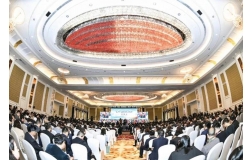
16 Oct 2018
2018 Silk Road Business Summit (Zhangjiajie City, Hunan Province, 16 Oct. 2018)
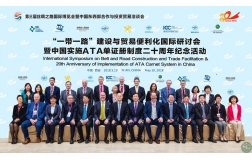
10 May 2018
The International Symposium on Belt and Road Construction and Trade Facilitation & 20th Anniversary of Implementation of ATA Carnet System
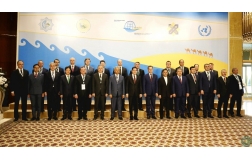
2 May 2018
The Great Silk Road - Towards New Developments Forum in Turkmenistan
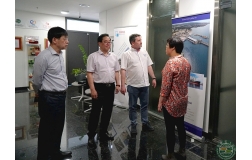
24 Apr 2018
The 2nd Silk Road Tourism Conference (24 April 2018, Dubrovnik, Croatia)
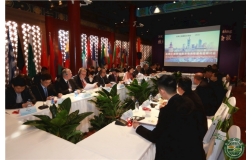
10 Dec 2017
SRCIC 2nd Anniversary Celebration (9-10 December 2017, Beijing, China)
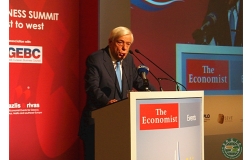
10 Oct 2017
EU-Eurasia-China Business Summit (Athens, 9-10 October, 2017)
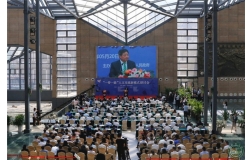
8 Jun 2017
Seminar on New Modes for Cultural Exchanges among the Belt and Road Countries (Xi’an, 20 May, 2017)
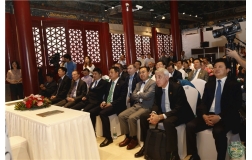
31 May 2017
SRCIC signs cooperation agreement with Changsha (Beijing, 16 May, 2017)
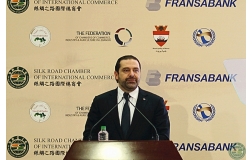
27 Apr 2017
Lebanon Roadshow (Beirut, 06 April 2017)
VideosMore
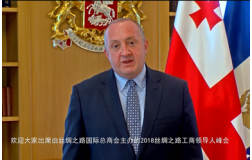
10 Oct 2018
A congratulatory video from Georgian President for 2018 Silk Road Business Summit
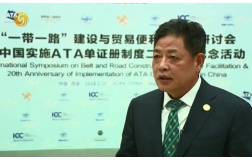
10 May 2018
The International Symposium on Belt and Road Construction and Trade Facilitation
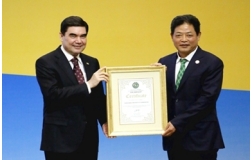
9 May 2018
SRCIC Delegation attends the Great Silk Road -Towards New Developments Forum in Turkmenistan
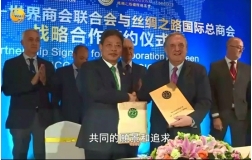
12 Apr 2018
SRCIC and ICC-WCF Signs Strategic Cooperation Agreement
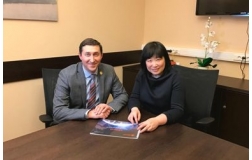
23 Mar 2018
China Business Network Interview: Russian Business Sector Embraces BRI
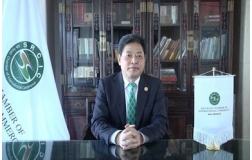
13 Feb 2018
Chinese New Year Greeting from Chairman Lu Jianzhong

9 Sep 2017
Congratulatory Message from H.E. Maryna Poroshenko, First Lady of Ukraine
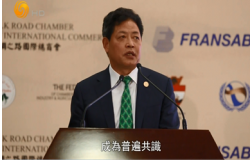
18 Apr 2017
20170418 Culture of the Silk Road: Belt and Road Cooperation & Development Conference Held in Beirut, Lebanon
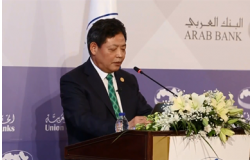
17 Apr 2017
20170417 Culture of the Silk Road: The Arab Banking Conference for 2017 Held in Amman, Jordan

25 Jan 2017
Chinese New Year Greetings from Chairman Lu Jianzhong on January 25, 2017
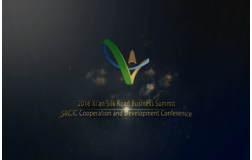
30 Sep 2016
2016 Xi'an Silk Road Business Summit and Cooperation & Development Conference of SRCIC
Chairman's Message
Greetings from the Silk Road Chamber of International Commerce! On behalf of SRCIC, I would like to welcome you to our website!
| Read more |
Latest PublicationsMore
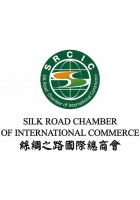
16 Oct 2018
Zhangjiajie Consensus
Member DirectoryMore

